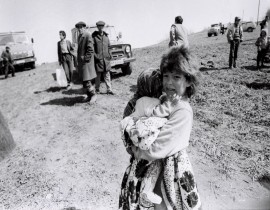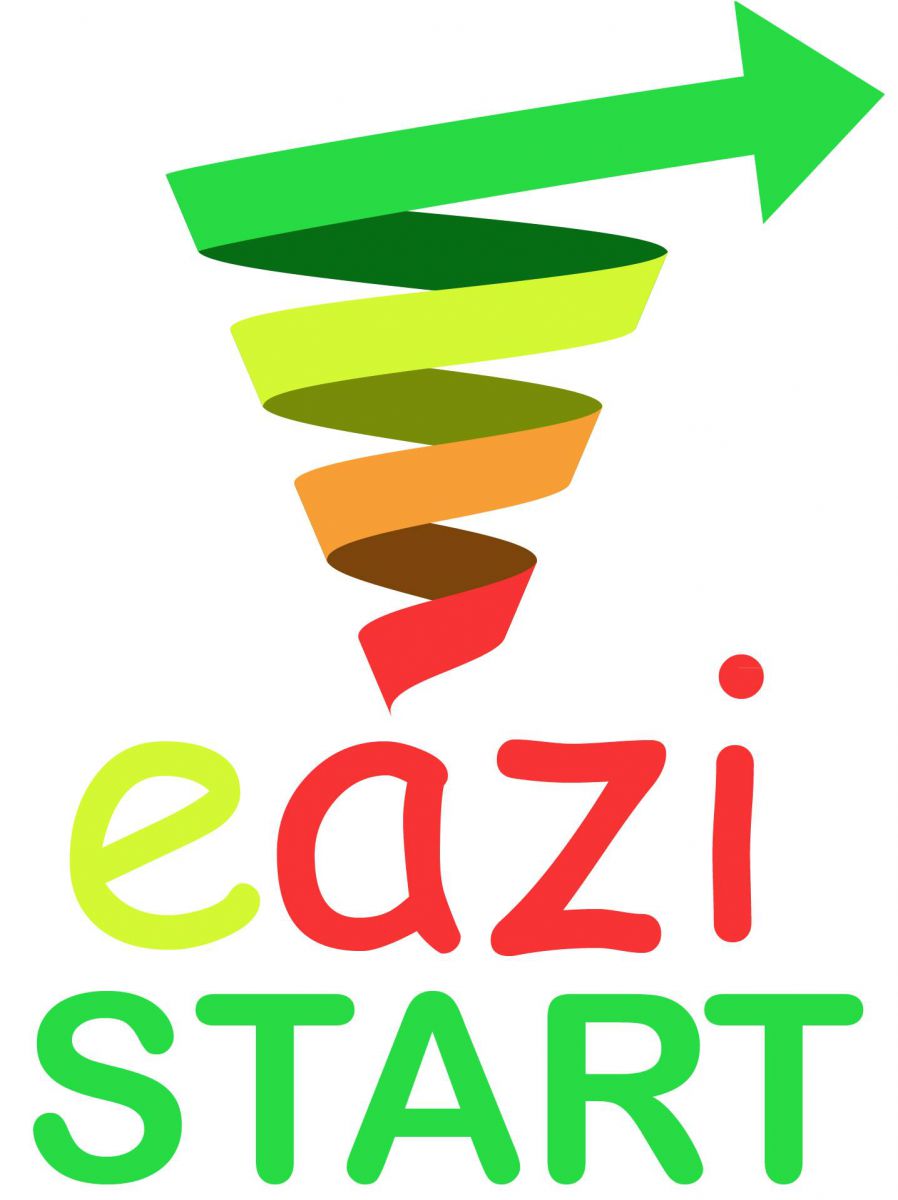Politicon.co
Clashing visions: the global contest of competing geopolitical projects
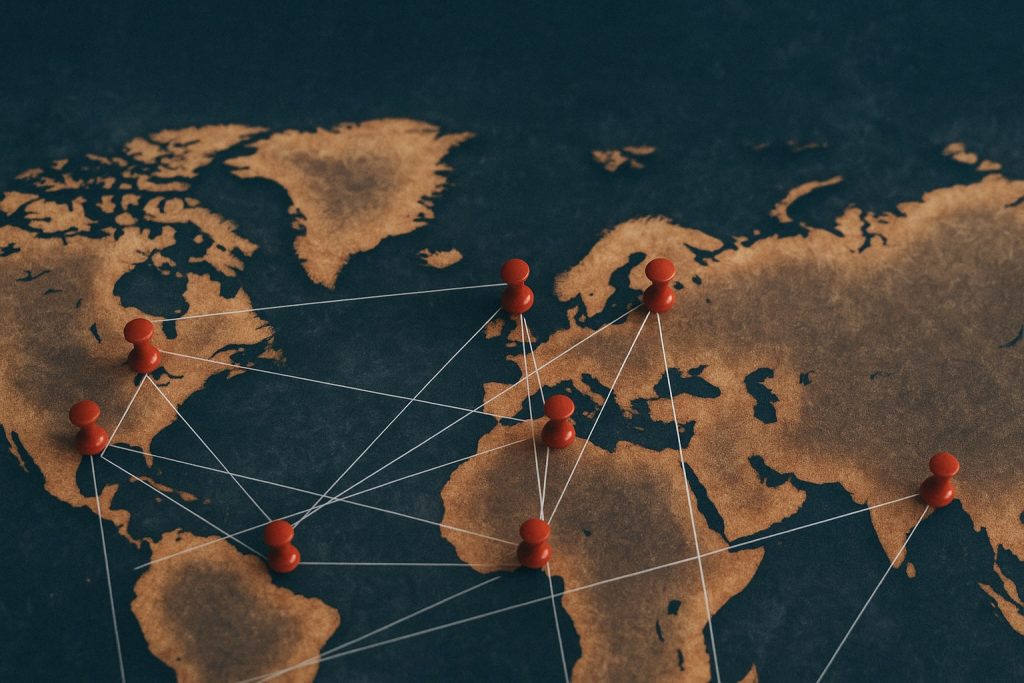
Introduction
Since time immemorial, international relations between states have evolved in such a way that powerful actors - those endowed with greater political, military and economic resources have assumed the role of addressing challenges of a global or systemic scale. In pursuit of objectives commensurate with their capabilities and ambitions, these actors have often articulated and advanced distinct geopolitical projects. These projects serve as strategic frameworks through which states seek to shape regional or global orders, extend their spheres of influence, and institutionalize their normative, economic, or security preferences. Geopolitical projects thus function not only as instruments of foreign policy but also as expressions of long-term visions for international hierarchy and governance.
At their core, geopolitical projects aim to transform material capabilities into structured influence across defined geographic and political spaces. This process typically involves the projection of values, economic models, security architectures, and institutional arrangements. Such projects are rarely neutral or universally accepted; instead, they reflect the strategic interests and ideological orientations of their architects. For example, while some projects emphasize liberal institutionalism and economic interdependence, others prioritize sovereignty, civilizational identity, or strategic autonomy. As a result, the global order becomes a contested terrain in which multiple projects coexist, overlap, and at times directly conflict.
The current historical moment is characterized by a shift from a relatively unipolar post-Cold War order dominated by a Western liberal geopolitical vision to a more pluralistic and competitive landscape.
In this context, the competition between geopolitical projects has become a defining feature of contemporary international relations. It reflects not only a redistribution of power but also a deep contestation over the rules, values, and institutions that underpin global governance. As such, the analysis of geopolitical projects provides a valuable lens through which to understand the strategic behavior of major powers, the fragmentation of global order, and the evolving architecture of international relations in the 21st century.
Historical Parallels: Geopolitical Projects Throughout Times
While the contemporary world is witnessing a renewed contest between competing geopolitical projects, this phenomenon is far from unprecedented. History is replete with periods in which powerful actors sought to reshape the international order through visions of influence and control. These historical parallels not only offer valuable analytical insights but also reveal recurring patterns in how states use geopolitical projects to translate material power into structural and ideological leadership.
One of the clearest antecedents is the age of empire in the 19th and early 20th centuries, when European powers- most notably Britain and France pursued far-reaching geopolitical strategies to project their influence across continents. These imperial projects were not solely about territorial expansion; they were also underpinned by ideological claims about civilization, progress, and governance. The “civilizing mission” was a normative project wrapped around economic and strategic interests, just as modern geopolitical initiatives often combine developmental rhetoric with strategic calculations.
Even earlier, in the aftermath of the Napoleonic Wars, the Congress of Vienna (1815) inaugurated a period of multipolar competition and conservative order-building among European powers, especially Austria, Russia, Prussia, and Britain. The so-called Concert of Europe was itself a geopolitical project aimed at preserving a balance of power and suppressing revolutionary upheaval.
The Cold War era presents perhaps the most structured and ideologically defined example of competing geopolitical projects. The United States and the Soviet Union promoted rival world orders each rooted in distinct political-economic systems- capitalism versus socialism and backed by global alliances, military blocs, and ideological institutions. The Marshall Plan and NATO, on the one hand, and the Warsaw Pact and COMECON, on the other, were institutional expressions of these broader projects. The Cold War thus illustrates how geopolitical competition can become systemic, shaping not only bilateral relations but the rules of international engagement for decades.
What unites these historical examples is the strategic ambition to structure international affairs around a particular vision of order-whether imperial, ideological, or multipolar. They reveal that geopolitical projects are not aberrations but recurring instruments through which powerful states seek to stabilize or transform the international environment in their favor. Today’s competing visions - liberal internationalism, multipolar realism, civilizational statehood should therefore be viewed as part of a broader historical continuum, shaped by both the material distribution of power and the ideational struggles over global order.
Strategic Chaos as a Tool: Buying Time in an Age of Geopolitical Turbulence
The war in Ukraine, the shifting fronts of conflict in the Middle East, and mounting global uncertainty have not merely reshaped specific regions. They have fundamentally disrupted the architecture of global geopolitics. In this emergent environment, a defining trend is becoming clear: most global and regional powers are no longer pursuing decisive geopolitical victories, but rather seeking to earn time: to test, recalibrate, and eventually implement long-term strategies amid uncertainty. It is of vital importance to comprehend that this transitional moment is not about consolidation; it is about strategic delay.
Caught in the throes of geopolitical turbulence, major actors are weaponizing controlled chaos in each other’s spheres of influence as a deliberate, calculated tactic. Conflict becomes not only an outcome of rivalry, but also a mechanism to stall rival powers, drain their resources, and constrain their strategic maneuvering. In short, the management and manipulation of chaos has become one of the most accessible tools of power. Nowhere is this more evident than in the ongoing war in Ukraine. For Russia, the war functions as both a direct pressure campaign against the Western security architecture and a means to keep the EU economically and diplomatically preoccupied. For the Anglo-Saxon world, especially the U.S. and UK the war becomes a double-edged instrument: deterring Russia while exposing fractures in continental Europe. But paradoxically, these same powers are themselves experiencing signs of informal disintegration: political polarization in the U.S., and a growing divergence between national interests and global ambitions. In Europe, the EU struggles to uphold unity and normative strength. Yet its strategic posture relies heavily on the assertiveness of France and the economic backbone of Germany, both of which face internal and external pressures. In this respect, Russia's war in Ukraine is not only about Ukraine; it is about testing the existential resilience of the EU as a political and geopolitical project.
Meanwhile, Türkiye and Iran have reoriented their strategic radar toward the Middle East, recognizing that the crisis of Western-led regional architectures offers a historic opportunity to assert dominance. Türkiye leverages its military resources, energy corridors, and cultural influence to fill power vacuums in Syria, Iraq, and the South Caucasus. In turn, Iran doubles down on its “Axis of Resistance”, using asymmetry and ideology to counterbalance Israel and U.S. presence. This emerging logic of “strategic turbulence” reveals that chaos is no longer accidental - it is instrumental. Power today is not only measured by control of territory or alliances but by an actor’s ability to navigate disorder, manufacture uncertainty for others, and remain internally resilient amid global flux.
In essence, we are witnessing the geopolitical equivalent of a stormy sea in which no actor is steering toward the shore just yet. Instead, each is building a stronger vessel while subtly undermining the others’ balance, awaiting the moment when the fog of uncertainty clears. Until then, chaos remains the most reliable currency of time.
Future Faultlines: Episodes and Actors That Will Shape the International Order
As global geopolitics transitions from unipolar stability to multipolar turbulence, several unfolding episodes will prove decisive in shaping the trajectory of international order in the coming years. These are not isolated developments. They are convergence points of systemic change, where strategic ambition, structural crisis, and ideological contestation intersect.
1. The Outcome of the War in Ukraine
The war in Ukraine is more than a regional conflict - it is a stress test of global norms, security architectures, and Western coherence. If the West prevails, it might temporarily reinforce transatlantic leadership, but at a significant cost. Either way the post-war settlement (or lack thereof) will set a precedent for how power, territory, and sovereignty are contested and resolved in the 21st century.
2. Geopolitical Shifts in the Middle East
The Middle East remains a volatile arena of realignment, where Western influence is declining, and regional actors are recalibrating their strategies. With the Abraham Accords, renewed Iranian assertiveness, Turkish activism, and the growing presence of Russia and China, the region is experiencing multipolar penetration. The balance of influence between these actors, particularly whether the Middle East becomes more autonomous or remains externally managed will have ripple effects on energy markets, security regimes, and ideological flows globally.
3. Internal Issues in the EU, USA, and Britain
Even as they attempt to shape the world, the Western powers face deep internal fractures. In the EU, divergences between core and periphery, democratic backsliding, and the overstretch of enlargement efforts challenge its cohesion. The USA is gripped by ideological polarization and institutional erosion, threatening the credibility of its leadership abroad. The UK, still navigating the fallout of Brexit, is attempting to project a "Global Britain" identity while facing pressures of territorial unity and declining economic weight. These internal vulnerabilities constrain strategic vision, opening space for alternative power centers to rise.
A Hierarchy of Influence: Mapping the Actors of the Emerging Order
In light of these unfolding episodes, it is possible provisionally to categorize the main geopolitical actors into two functional classes, based not only on current capabilities but also on their projected ambitions and strategic behaviors:
First-Class Powers: Global Actors or Aspirants to Global Dominance
These states possess (or actively pursue) the ability to project influence globally across military, economic, and ideological dimensions. They also seek to define international norms and compete in multiple strategic theaters.
United States – Still the principal architect of the liberal world order, yet facing internal fragmentation and external balancing.
China– An ascending peer competitor to the U.S., using the BRI, technology, and state capitalism to build an alternative global architecture.
Russia – A revisionist power using military force, energy leverage, and ideological narratives to challenge the Western-led system[1].
United Kingdom – Despite diminished power post-Brexit, it retains global ambitions via military presence, intelligence networks, and strategic partnerships.
Second-Class Powers: Regionally Dominant, Globally Aspirational
These actors are highly influential within their regions and occasionally challenge global norms, but lack the full spectrum capacity or alliances to act as system-shaping global powers. However, their strategic flexibility and regional assertiveness allow them to act as pivotal players in key theatres of conflict.
Turkey – Combining military assertiveness with civilizational rhetoric, Ankara seeks strategic autonomy and increased leverage in Eurasia, the Middle East, and Africa.
Iran – A resilient ideological and military actor relying on asymmetry and strategic depth to influence the Middle East and counterbalance Western allies.
Strategic Implications
This conditional classification reflects not only the current state of power but also the emerging modes of influence. The first-class powers are increasingly constrained by internal volatility and overstretch, while the second-class powers display greater agility, ideological clarity, and adaptability in fluid environments. As a result, the conventional boundaries between global and regional powers are becoming porous, creating a dynamic where even mid-sized actors can shape global trends when larger powers are distracted or in retreat. In this environment, the key strategic dynamic is not just who holds power, but who best adapts to turbulence, exploits ambiguity, and redefines influence through non-traditional means - whether that be controlling narratives, building resilient regional alliances, or weaponizing instability.
Criteria of Classification: Global vs. Regional Powers in the Contemporary Order
In a world marked by power diffusion and strategic complexity, the distinction between global powers and regional powers is neither absolute nor static. Rather, it is based on a contextual evaluation of each actor’s available resources and capacity to project influence beyond their immediate environment at a given point in time. This classification reflects not only potential, but also mobilized capability: the ability to convert raw assets into meaningful strategic presence.
To classify powers effectively, we consider a spectrum of interrelated factors:
Political resources: institutional coherence, decision-making autonomy, strategic vision, and capacity to lead or shape coalitions;
Military capabilities: global force projection, nuclear deterrence, expeditionary power, military-industrial base, and defense networks;
Economic scale: GDP size, financial system reach, technological innovation, and trade leverage;
Cultural and ideological influence: soft power, normative appeal, media and information influence, and civilizational resonance;
Diplomatic architecture: global alliance networks, institutional leadership roles, and regional hegemony.
Using these criteria, we can observe meaningful distinctions in how states behave and how far their influence extends.
Global Powers (First-Class Actors)
Global powers are those that consistently shape developments beyond their own region, influence the design of international norms and institutions, and possess the material and ideational bandwidth to act across multiple theaters simultaneously. The United States remains the archetype of a global power, with unmatched military reach (global basing, naval dominance, nuclear triad), technological innovation, financial centrality (dollar hegemony), and leadership of multilateral alliances (NATO, AUKUS, QUAD). Despite internal political volatility, its strategic posture spans every continent. China has rapidly ascended due to its vast economic footprint (second-largest economy), global investment initiatives (Belt and Road Initiative), technological competition (AI, 5G, green energy), and increasingly assertive diplomacy.
Russia, though economically challenged remarkably under international sanctions, leverages strategic depth, nuclear power status, energy leverage, and military capabilities to affect outcomes in Europe, the Middle East, and Central Asia. It challenges the Western-led order not only by force, but also through narrative warfare, cyber operations, and proxy networks.
The United Kingdom, post-Brexit, retains considerable global influence through its intelligence apparatus (Five Eyes), financial hubs (City of London), global military presence (e.g., Indian Ocean, Gulf, Pacific deployments), and diplomatic footprint, even if its material base has relatively declined. It continues to act as a “global broker” in key security, economic, and normative arenas.
These four powers are not equally balanced, but all possess the strategic intent and structural capacity to influence the global system, not just in their neighborhoods but across regions.
Regional Powers with Global Aspirations (Second-Class Actors)
In contrast, regional powers exhibit a strong capacity for influence within a defined geographical sphere, with episodic reach beyond it. Their resource base limits their global engagement, but they often act with greater agility, ideological clarity, and localized legitimacy than larger powers.
Turkey projects influence through military power (Bayraktar drones, regional bases), cultural diplomacy (Acting as a “locomotive of integration of Turkic world), and strategic balancing between the West, Russia, and the Islamic world. It plays a decisive role in the Balkans, the Caucasus, the Eastern Mediterranean, and the Middle East, but currently has relatively limited institutional and economic infrastructure for truly global leadership.
Iran, through its strategic depth doctrine, asymmetrical networks, and ideological axis, is a key shaper of Middle Eastern dynamics. Its economic and military constraints limit global projection, but within its region, it operates with strategic persistence and ideological conviction.
Strategic Relevance of the Classification
This classification is not a hierarchy of prestige but a functional analytical tool. It helps explain why some actors are capable of shaping system-wide dynamics -rewriting rules, building institutions, or managing global crises, while others excel at reshaping the regional balance of power and acting as spoilers or catalysts. Furthermore, the distinction is not permanent. In a turbulent world where resource bases fluctuate and norms shift, regional powers can become global influencers, especially in moments when global actors are overstretched or internally fragmented. Likewise, global powers can be pulled back into regional confinement if domestic vulnerabilities overwhelm strategic coherence.
Conclusion: Competing Projects in a Fragmented World
The world is no longer governed by a singular, coherent vision of order. Instead, we are witnessing the rise of multiple, clashing geopolitical projects, each rooted in distinct civilizational narratives, power resources, and strategic ambitions. From liberal internationalism to civilizational statehood, from strategic autonomy to multipolar realism, these projects do not merely coexist—they collide, compete, and constantly reshape the global landscape. The post-Cold War era, once defined by a Western-centric paradigm of rule-based order, has now given way to a pluralistic and volatile phase, where the dominant struggle is not only over territory or trade but over the very architecture of international life. In this context, chaos has become both a weapon and a condition. Major powers, unable or unwilling to settle the systemic transition peacefully, are instead buying time through disruption-fueling instability in rivals' spheres of influence while crafting long-term strategies for a reordered global game.
This geopolitical turbulence is compounded by the internal fragilities of once-dominant actors. The Anglo-Saxon world wrestles with informal disintegration, Europe bears the weight of systemic overstretch, and revisionist states like Russia and emerging giants like China seek to capitalize on Western disarray. At the same time, mid-sized powers like Türkiye and Iran exploit regional openings, behaving as power brokers with ambitions that outpace their material base. What unites this moment is not consensus but strategic ambiguity - a world in flux, where influence is measured less by stability and more by an actor’s capacity to adapt, disrupt, and endure. The final shape of the international order remains uncertain, but one thing is clear: the contest between geopolitical projects will define the coming decades, not only through wars and alliances but through narratives, institutions, and visions of the world itself. In this fractured environment, understanding the nature, logic, and scope of these competing projects is essential-not only for scholars of international relations but for policymakers navigating a world where the future is up for grabs.
[1] In this very paper Russia is presented as a global actor by referring to the interview of American political scientist and representative of political realism - J.Mearsheimer (https://valdaiclub.com/multimedia/video/john-mearsheimer-we-are-moving-to-a-multipolar-world-with-three-great-powers/ )
Note: This article was prepared within the framework of the Politicon writing competition.
![]()
- TAGS :


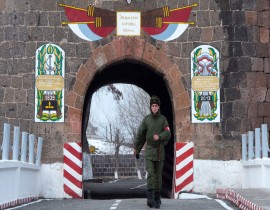
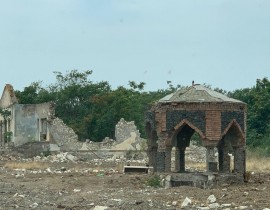
png-1748065971.png)
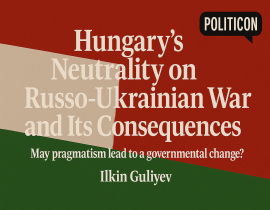



jpg-1599133320.jpg)
